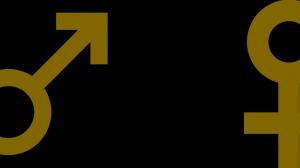Today, we’re gonna have a quick review session on gender with some definitions to make everything clear.
- Gender: a socially constructed concept that categorizes people based off of their social and cultural roles (may differ cross-culturally). This term is not as rigid as sex is and can be seen on a fluid scale or a continuum.
- Sex: Biological differences between males and females. Not everyone fits into the category of male or female, some people may have a combination of X and Y chromosomes that don’t adhere to the “norm.”
- Cisgender: someone whose gender identity aligns with their assigned or biological sex. This comes from the Latin root “cis” which means ‘on this side of’ while “trans” refers to ‘across’ or ‘opposite’
- Transgender: someone whose self-perception of gender is not congruent with their biological sex. Trans people may go through gender reassignment surgery to correct this, but it does not always happen. Regardless of body parts, they are transgender and their pronouns and identity need to be respected. The flag on the left (referenced above) represents the transgender community, “The stripes at the top and bottom are light blue, the traditional color for baby boys. The stripes next to them are pink, the traditional color for baby girls. The stripe in the middle is white, for those who are transitioning or consider themselves having a neutral or undefined gender.”
- Agender: Similar to the non-binary identity we talked about in my previous post, agender is a person who sees themselves as non-conforming to traditional gender identity. The flag on the right is the agender pride flag. The black and white represent the absence of gender, the gray is semi-genderless (between identifying with a gender or being agender), and the green is representative of being non-binary
- Pangender: is someone who identifies with more than one gender. The Greek prefix, “pan” means ‘all.’ This could be a fluidity within one’s experiences with gender in their lifetime. The middle flag is the pangender pride flag, here, the yellow stands for all genders that are neither male nor female, the light red color is the transition to the male and female genders, the third is a light violet pink which is a combination of male and female genders, and the white is a combination of all genders.
Important Links:

